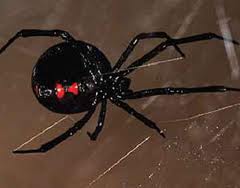A Plan To Get Rid Of All Cats
Dr. Gareth Morgan, Cats To Go
 If New Zealand businessman Gareth Morgan had his druthers, it would all be over for Fluffy and pals. The economist and environmental proponent wanted to see his country rid of pets that posed a danger to native birds, namely cats.
If New Zealand businessman Gareth Morgan had his druthers, it would all be over for Fluffy and pals. The economist and environmental proponent wanted to see his country rid of pets that posed a danger to native birds, namely cats.
New Zealand plays home to an enormous array of native birds species. The island nation's human inhabitants have the highest cat ownership rate in the world with 40-percent of households having at least one cat. It is estimated that there are 1.26 million cats in New Zealand.
New Zealand's native fauna is predominantly "walking birds." That means they don't fly. Gareth stated that New Zealand originally had no predators, but around 150 years ago, the settlors introduced many predators, whose numbers have been increasing. He mentions a visit to China, which he stated has been ruined with poor air quality and ruined forests. He knows that New Zealand has an amazing asset that they need to enhance and not let it go the same way as China.
So does Gareth think that all cats should be euthanized? He said his feelings could be summed up in a couple of slogans, "Every cat is a wanted cat," or "A confined cat is a pet, otherwise they're a pest!" So, his target was the cats that were allowed to wander and hunt. These included both feral cats and even domestic cats that were allowed to wander off their property and hunt on other people's property. His argument was that cats that aren't owned should be trapped and humanely euthanized. He stated that they do this with dogs, so why not with cats, who are causing so much damage. As far as domestic cats, and he stated for the record his family has a cat, that if they should get caught wandering and have a microchip, they should be returned to the owner with a fine if the authorities feel it is appropriate. His bottom line was that all cats should be contained.
But what if you get rid of all the cats, doesn't that lead to a rodent problem? Gareth's defense is that he doesn't believe we should get rid of all the cats, just the wandering ones. If there are mice and other rodents in and around homes, then the domestic cats could take care of the problem. In terms of rodents in public areas, he stated that there are already in place lots of techniques to get rid of those. These include poisons and an invention that some people might have heard of called the "mouse trap." He goes on further to state that we are not relying on cats to take care of the rodent problem as it is.
When asked about eradicating humans that have done more damage to eco-systems than cats alone, Gareth said he heard this statement frequently and believes that this is an argument trying to distract from the point.
 Gareth has written books on climate change and the defamation of fisheries around the world, so his issue about cats was not to the exclusion of any other efforts to enhance our environment and to curb the damage by human beings. He goes on to state that this particular issue was due to human beings, in that they are the one who originally introduced cats to New Zealand. So when asked why he is interfering with nature, he said there was nothing natural about breeding cats in great numbers in domestic environments and then letting them loose into the wild. That is actually a human endeavor.
Gareth has written books on climate change and the defamation of fisheries around the world, so his issue about cats was not to the exclusion of any other efforts to enhance our environment and to curb the damage by human beings. He goes on to state that this particular issue was due to human beings, in that they are the one who originally introduced cats to New Zealand. So when asked why he is interfering with nature, he said there was nothing natural about breeding cats in great numbers in domestic environments and then letting them loose into the wild. That is actually a human endeavor.
So how do you prove that cats are killing these birds? Gareth said that while every killed bird is not blamed on a cat, you can tell if a feral cat has killed birds by doing an autopsy. Gareth also stated that the statistics showed that domestic cats brought home 20-percent of what they kill; left 50-percent to rot, because they don't kill to eat, they kill for the pleasure; and the other 30-percent they ate on the spot. Therefore, he stated that cats were natural born killers, just like lions or tigers.
So, how is all of this siting with the people in New Zealand and around the world? Gareth stated he has been contacted by both rational people as well as by "nut cases." He said this is typical with any issue. He likens it to taking on the gun lobby in the United States!
Gareth agrees on a happy medium in that cats should be kept contained. This is not only good for the birds, but good for the cats as well. You can keep the cats in your house or in your yard by using a netting to keep them contained. There are also catteries, an outdoor enclosure, which give your cat a chance to be outside, sit in the sun and smell fresh air all while being safely confined. Gareth stated that research showed that a cat that's born inside and kept inside for its entire life, hates going outside. When a local cat expert challenged Gareth and stated Gareth would probably feel really bad about confining a cat indoors, which doesn't seem natural, Gareth replied that that was the expert's perspective and not necessarily the cat's perspective.
Common Pet Toxins In Your Home - You Probably Have Every Single One of Them!
Dr. Justine Lee, Pet Poison Helpline
 Dr. Justine Lee worked at the Pet Poison Helpline and stated that the most commons calls they received were about the kitchen foods that we eat. You are obviously not going to get rid of your kitchen food, so you just have to make sure that you appropriately pet-proof your house.
Dr. Justine Lee worked at the Pet Poison Helpline and stated that the most commons calls they received were about the kitchen foods that we eat. You are obviously not going to get rid of your kitchen food, so you just have to make sure that you appropriately pet-proof your house.
Most people aren't aware that of the top five poisons that dogs get into, three of them are food. These include grapes and raisins, sugar-free xylitol (found in most gums and mints swell as in some peanut butters) and chocolate.
You might have heard conflicting stories about chocolate being poisonous to dogs. However, it is the dose that makes the poison. Really, everything is poisonous, including oxygen, water and salt. It is how much you get into. So if your dog eats a couple of chocolate chip cookies, it's not a big deal. But it is also size-dependent, depending on how big your dog is or if he has underlying heart problems. A shortcut for determining chocolate is the darker and more bitter the chocolate, the more dangerous it is, which is typical of most baking chocolates. Also, white chocolate is not a problem. So its no surprise that the busiest time for the Pet Poison Helpline is during the holidays, which are associated with chocolate.
The top three common poisons dogs get into are food items and the last two most common poisons are human medications. These include human NSAIDS (pain killers/anti-inflammatories). Not only do our dogs get into these medicines on their own, but we sometimes even give our dogs human medications, which should never be done!
Another type of pet poison is marijuana. Not only is it poison in a loose-leaf form, but also it is more dangerous when people make pot brownies or pot butter. This can lead to a double poisoning from the chocolate and the oil from the butter. This can be very dangerous, as most pet owners won't admit when their dog gets into marijuana. Dr. Justine Lee's said it was very important that they knew exactly what the dog ingested, and that they were not the police nor the DEA (Drug enforcement Agency), all they cared about was treating the pet. So please be honest and own up to it so that your pet can be treated as soon as possible.
While all dogs are prone to getting into the wrong items, the most common breed that is called into the Pet Poison Helpline are Labradors, because they love to eat everything!
Dr. Lee stated that you should have the Pet Poison Helpline programmed into your phone at 1-855-764-7661, as well as the number of your veterinarian and a pet emergency clinic. Also, if you suspect your dog has been poisoned, don't give them any milk, medications or food. Also, don't try to induce vomiting by using syrup of ipecac. Sometimes it can be more dangerous and make your pet sicker. In fact, even in human medicine, syrup of ipecac is no longer even recommended. When it doubt, get the poison away from your pet, get them out of the room, and then consult with an expert to see if inducing vomiting is appropriate in your case, with hydrogen peroxide. Unfortunately, for cats, there is nothing you can give them to induce vomiting at home.
Visit Website
Dog Aggression
Peggy Swager, Training The Hard To Train Dog
 Peggy Swager is the author of "Training the Hard to Train Dog," and enjoys the challenge of training dogs that other people have had difficulty with.
Peggy Swager is the author of "Training the Hard to Train Dog," and enjoys the challenge of training dogs that other people have had difficulty with.
We spoke to Peggy about dog aggression, which comes in many forms. Ironically, some people don't realize they are dealing with aggression issues when their beloved dog snaps at them over a bone or toy. Sometimes, the problem is between two dogs in a household who begin to fight with each other.
Another type of aggression is from another dog. Perhaps you are out walking your dog when a stray dog confronts you. Peggy states you should watch the dog and his body language. Is he rushing at you? Are his hackles up? If you are walking a small dog, you should immediately pick him up. If you are walking a large dog, you need to stand in between your dog and the stray. When all else fails, you should always carry pepper spray. This will not harm the dog, but will give you a chance to leave the area. Plus, just carrying the spray will put you in a calm demeanor, which your dog will pick up on and also be more relaxed.
Another issue Peggy warns us about is what's called the "alpha-role." This is when you stand over a dog and roll it on its back and pin him to the ground to correct him. Peggy has known so many people who have tried to do this and have gotten bit as a result. Peggy has also seen where one dog alpha-rolled another dog, and this didn't work for the dogs either.
Dog owners need to learn what kinds of aggression they can handle, how to retrain the dog to resolve that issue, and when to call in professional help. Here is a link to a YouTube video that talks more about aggression and illustrates some of the techniques Peggy discusses.
Visit Website
Black Widow Spiders Poisonous to Pets - Dr. Debbie
 Pet Threats Come in All Sizes
Pet Threats Come in All Sizes
Our doggie family ambled along on our typical morning walk along the community trail. With a family of two Labradors and a Yorkie mix, my crew is always up for fun and they investigate anything and everything.
Sometimes it's a crunchy cockroach snack or the fortunate edible remnant in a discarded candy wrapper. My dogs enjoy the "date game" where they snatch up shriveled fruit fallen from date palms, crunching away before the mom and dad notice. And sometimes it's a half-hearted game of chase with an unsuspecting rabbit. A more gut wrenching episode once involved my Labrador ingesting a rat with tail slipping down his gullet like a piece of spaghetti. My furry kids are professional trouble finders, so I try to keep a watchful eye for things that make them go "Oooh," and make me go "Ugh!"
Female Black Widow Spider
While walking along the pedestrian pathway we came upon the day's discovery - spiders and lots of them living in the recesses of a block wall. The hairs on my arm stood up as my Yorkie mix approached their lair. I recognize what these spiders are and what could happen to a 16-pound pup.
The long legged spiders were over 1 and 1/2" in length, black in color with a distinctive orange hourglass mark on its underbelly. Meet the black widow spider, a common arachnid found in every state in the U.S. except Alaska.
The Black Widow Bite
Black widow spiders contain a potent neurotoxin that causes pain, swelling and can lead paralysis. Female black widows are the dangerous ones, while the males rarely ever bite. While some black widow bites go unnoticed, others cause immediate pain at the site or result in pain at the nearest lymph node. Pain intensity reaches its maximum within 1 to 3 hours after the bite, but can last up to 48 hours.
Symptoms of a black widow bite appear within 8 hours after a bite and include muscle twitching, restlessness, rigid abdomen and difficulty breathing. Symptoms may result in high blood pressure, a racing heart rate, seizures and collapse. Cats are very sensitive to the toxins and can suffer fatalities, and while dogs are more resistant to a black widow bite, they still can suffer serious illness.
Symptoms of black widow bite include:
 - Pain and numbness around bite site
- Pain and numbness around bite site
- Anxiety
- Racing heart rate
- Muscle pain and stiffness, especially abdominal muscles
- Difficulty breathing
- Paralysis
- Seizures
Treatment for Black Widow Spider Bite
Call your veterinarian if you suspect your pet was bitten by a black widow. Initial home emergency care of a black widow bite may include ice packing the bite area and oral antihistamines like Benadryl. Your veterinarian will need to see your pet to evaluate and treat the more serious symptoms. Treatment may include medications to control muscle spasms and seizures. Blood pressure and blood sugar are monitored and intravenous fluids may be administered. An antivenin is available for more serious confirmed cases of black widow bites.
Prevention
Avoidance of spider habitats is the best prevention. These eight-legged critters favor dark recesses both indoors and outdoors. Look for cobwebs with a distinctive funnel-shaped opening at the top. Keep a close eye on your dog when out exploring and inquire about spider control methods with your pest control company.
With pet noses so close to web level, the risk of black widow bites is just natural to being a dog. Our morning spider encounter ended without any drama, thankfully. After one firm "No!" my doggies retreated to unearth some other lucky find. Here's to hoping it doesn't involve any rats or bugs next time.
Featured veterinarian known as "Dr. Debbie" on national pet radio program, Animal Radio. Ebook author of "Yorkshire Terriers: How to Be Your Dog's Best Friend"; "Pugs: How to Be Your Dog's Best Friend"; "Mini Schnauzers: How to Be Your Dog's Best Friend"; and "Shih Tzu: How to Be Your Dog's Best Friend." Dr. Debbie's books.
Visit Website
The Dogfather's Grooming Tip with Joey Villani
 Anesthesia-Free Dentistry Offered By Groomers
Anesthesia-Free Dentistry Offered By Groomers
Joey tells us that a lot of groomers are now offering anesthesia-free dentistry in their salons and that there are two ways that this is being offered.
One is an enzymatic cleanser, such as gels and sprays or additives for their water. Over time, these will remove the plaque. Groomers are starting this in their salons and then sending the product home with their clients to treat their pets. If you do this correctly and stay on top of it, these products work well and are safe to use. However, you are not going to get the professional dentistry look that you would get from your veterinarian. This is an alternative for those animals that can't be put under anesthesia for one reason or another, or for the pet parent who doesn't have the funds for a professional cleaning. However, you will get the best results if the teeth are professionally cleaned first, and then you follow up with these products on a regular basis.
The other way is anesthesia-free dentistry, where the groomers are actually scaling the teeth. It is very unfortunate that the grooming industry is not licensed, because if it were, you would eliminate a lot of these problems. When you go in and scale the teeth of a dog that has a tremendous amount of tartar, a few things happen. Number one, dogs don't like it, and they are not going to let you do it very easily. This makes the whole process a negative process on the pet itself. This leaves a scar on their mind, and that any time someone looks at their teeth; they think this is going to happen again. Another thing, you don't know how the groomer's tools are disinfected or cleaned. A veterinarian is going to put his tools in an autoclave, sealed and opened just prior to the cleaning. The animal will also be sedated.
 When you scrape a tooth, you are opening up the tooth enamel. This is like having open pores. So even though the teeth may now look good, everything that they now eat and drink gets sucked into the teeth like a sponge. In a short amount of time, all of a sudden you have this buildup that came back rapidly and a lot worse than it was before. Teeth need to be scaled and then polished, just like your own dentist would do to your teeth. In some cases after scaling the teeth, bacteria is loosened and may go into your pet's system. Your veterinarian may then want to put your pet on an antibiotic immediately following a teeth cleaning.
When you scrape a tooth, you are opening up the tooth enamel. This is like having open pores. So even though the teeth may now look good, everything that they now eat and drink gets sucked into the teeth like a sponge. In a short amount of time, all of a sudden you have this buildup that came back rapidly and a lot worse than it was before. Teeth need to be scaled and then polished, just like your own dentist would do to your teeth. In some cases after scaling the teeth, bacteria is loosened and may go into your pet's system. Your veterinarian may then want to put your pet on an antibiotic immediately following a teeth cleaning.
In most states, it is against the law for groomers to perform anesthesia-free dentistry. So, if your groomer offers to scale your pet's teeth, tell them. " No thank you! I will have my veterinarian take care of it."
Animal Radio News with Stacey Cohen
 Penn and Teller Have Their Own Spider
Penn and Teller Have Their Own Spider
A longtime Las Vegas headliner has a spider named after him. Jason Bond, with Alabama's Auburn University, named a species of trapdoor spider for illusionist Penn Jillette. The rust-colored spider is native to the desert near Nevada's nuclear testing facility. In real life, the vocal half of Penn and Teller told the "Review-Journal" he was likely to, quote, "scream like a little girl" at the sight of a spider.
Library Gifts Covered in Poop
San Francisco puppies received an assist from the public library in their quest to become potty trained. With more people reading newspapers digitally, public contributions of newspaper to line cages at Animal Care and Control have gone down. The San Francisco Chronicle said the public library intervened and donated all of the 2,000 newspapers it went through every month. Animal Care said the library's ongoing gift took care of all their newspaper needs for their, quote, "poop machines."
 Bull Penis's Full Of Calories
Bull Penis's Full Of Calories
Turns out there's a lot more inside a popular dog treat than most pet owners probably imagine. They're called "pizzle" sticks or "bully" sticks and a study out of Canada said they're loaded with calories and bacteria. The treat is made from uncooked, dried bull penis and researchers said they can contain things like E. coli and MRSA. Add to that, they pack enough calories to make up as much as 30-percent of a dog's recommended daily calorie intake. The study, published in the Canadian Veterinary Journal, concluded that pet owners should consider such treats raw meat and always wash their hands after handling them.
 Listen to the entire Podcast of this show (#1343)
Listen to the entire Podcast of this show (#1343) 




